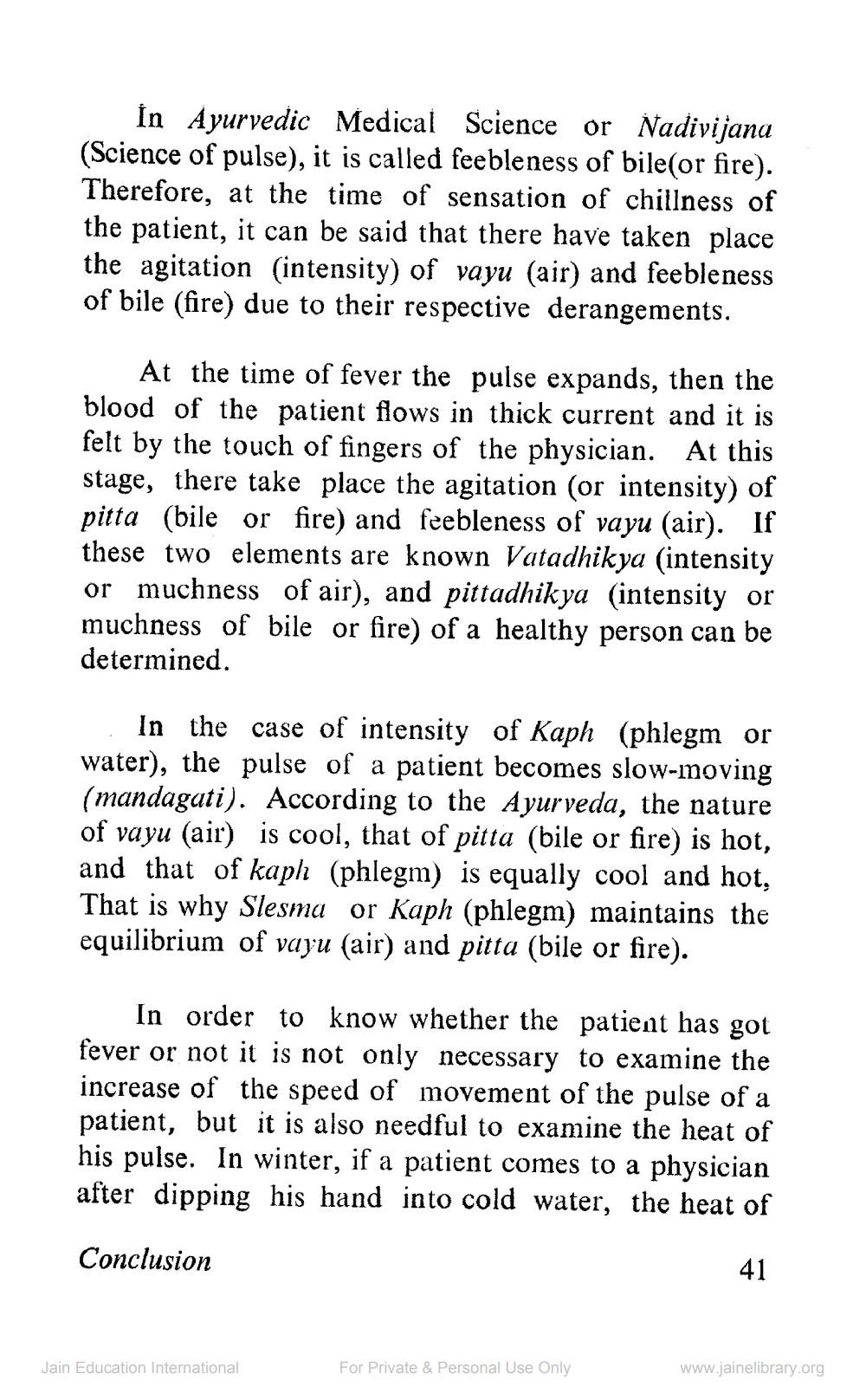________________
İn Ayurvedic Medical Science or Nadivijana (Science of pulse), it is called feebleness of bile(or fire). Therefore, at the time of sensation of chillness of the patient, it can be said that there have taken place the agitation intensity) of vayu (air) and feebleness of bile (fire) due to their respective derangements.
At the time of fever the pulse expands, then the blood of the patient flows in thick current and it is felt by the touch of fingers of the physician. At this stage, there take place the agitation (or intensity) of pitta (bile or fire) and feebleness of vayu (air). If these two elements are known Vatadhikya (intensity or muchness of air), and pittadhikya (intensity or muchness of bile or fire) of a healthy person can be determined.
In the case of intensity of Kaph (phlegm or water), the pulse of a patient becomes slow-moving (mandagati). According to the Ayurveda, the nature of vayu (air) is cool, that of pitta (bile or fire) is hot, and that of kaph (phlegm) is equally cool and hot, That is why Slesma or Kaph (phlegm) maintains the equilibrium of vayu (air) and pitta (bile or fire).
In order to know whether the patient has got fever or not it is not only necessary to examine the increase of the speed of movement of the pulse of a patient, but it is also needful to examine the heat of his pulse. In winter, if a patient comes to a physician after dipping his hand into cold water, the heat of
Conclusion
41
Jain Education International
For Private & Personal Use Only
www.jainelibrary.org




